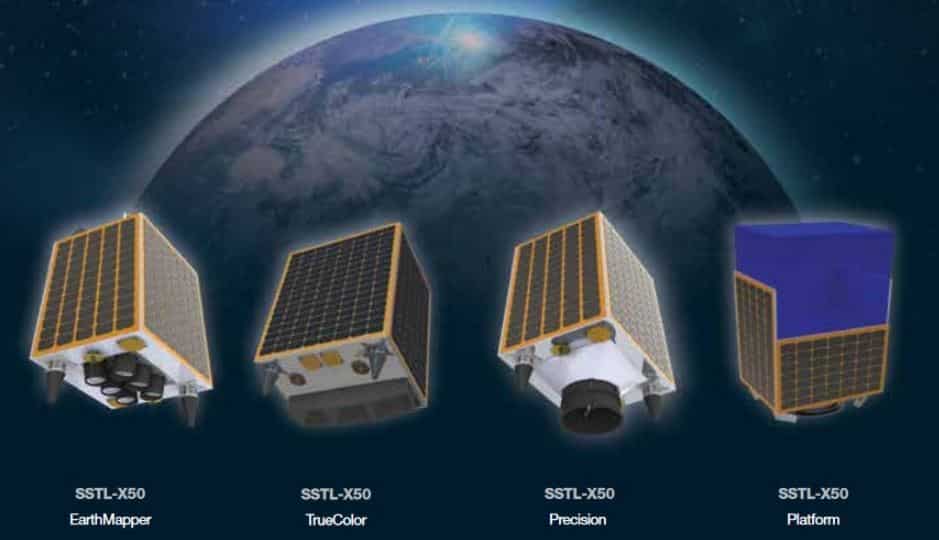Table of Contents
Removedebris satellite Mission | UPSC – IAS
RemoveDEBRIS was launched aboard the SpaceX Dragon refill spacecraft on 2 April 2018 as part of the CRS-14 (Commercial Resupply Service mission), arriving at the International Space Station on 4 April. Deployment of the satellite from the station’s Kibo module via robotic Canadarm-2 took place on 20 June 2018. At approximately 100 kg, RemoveDEBRIS is the largest satellite to have ever been deployed from the International Space Station.
About RemoveDebris Satellite Mission
RemoveDEBRIS is a satellite research project intending to demonstrate various space debris removal technologies. The satellite’s platform was manufactured by Surrey Satellite Technology Ltd (SSTL) and is a variant of the SSTL X50 series.
Rather than engaging in active debris removal (ADR) of real space debris, the RemoveDEBRIS mission plan is to test the efficacy of several ADR technologies on mock targets in LEO (low Earth orbit). In order to complete its planned experiments the platform is equipped with:-
- A net,
- A harpoon,
- A laser ranging instrument,
- A dragsail, and
- Two CubeSats (miniature research satellites)
Space debris encompasses both natural (meteoroid) and artificial (man-made) particles. Meteoroids are in orbit about the sun, while most artificial debris is in orbit about the Earth. Hence, the latter is more commonly referred to as orbital debris.
- The term Kessler syndrome is associated with Space Debris, which is used to describe a self-sustaining cascading collision of space debris in LEO (Low Earth Orbit).
The RemoveDebris satellite platform will showcase four methods for release, capture and deorbit two space debris targets, called DebriSATs:
- Net capture: It involves a net that will be deployed at the target CubeSat.
- Harpoon Capture: Which will be launched at a target plate made of “representative satellite panel materials”
- Vision-based navigation: Using cameras and LiDAR (light detection and ranging), the platform will send data about the debris back to the ground for processing.
- De-orbiting process: As it enters Earth’s atmosphere, the spacecraft will burn up, leaving no debris behind. The mission will demonstrate key Active Debris Removal (ADR) technologies in orbit, which will have significance for future missions as well.
As part of the space junk cleanup, a new device named space harpoon that captures junk has been tested successfully. It is part of the RemoveDEBRIS satellite project, a multi-organization European effort to create and test methods of reducing space debris
Space Harpoon
The harpoon is meant for larger targets, for example full-size satellites that have malfunctioned and are drifting from their orbit. A simple mass driver could knock them toward the Earth, but capturing them and controlling descent is a more controlled technique.
About Inter-Agency Space Debris Coordination Committee
- It is an international governmental forum for the worldwide coordination of activities related to the issues of man-made and natural debris in space.
- It aims to exchange information on space debris research activities between member space agencies, to facilitate opportunities for cooperation in space debris research, to review the progress of ongoing cooperative activities, and to identify debris mitigation options.
- ISRO is also a member of this committee.
Why Space Debris is a concern?
- Increase the cost of missions- Various space agencies have to manoeuvre their space programme in light of increasing space debris thus adding to extra economic and human resource on space programme.
- Debris is bound to increase– Space-scientists concern about the inexpensive, tiny satellites called CubeSats, which are going to add space junk around 15% in next 10 years.
Obstruction to various space endeavors
- NASA estimates that there are about 500,000 pieces of debris larger than half an inch across in low orbit, posing a potential danger to the 780-odd satellites operating in the area.
- Space junk travels at speeds up to 30,000 km an hour, which turns tiny pieces of orbital debris into deadly shrapnel that can damage satellites, space shuttles, space stations and spacecraft with humans aboard.




